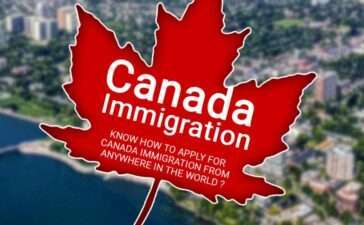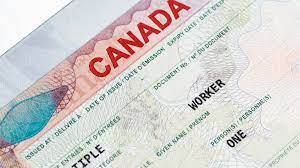Information on Immigration to Canada
Information on Immigration to Canada is vital to anyone interested in entering the country as a foreign worker. The government department responsible for overseeing the Canadian immigration process is called Immigration, Refugees and Citizenship Canada.
This department was established after the government reorganized its operations. It is responsible for determining the requirements for immigrants, and also the citizenship of those who have already arrived. As well, it is responsible for resettling refugees to Canada.
Requirements for immigrants
The Canadian government values education and work experience. These factors are reflected in the point system that gives preference to candidates with higher education and more work experience.
Several immigration programs have been established to accept immigrants who wish to move to Canada. Some of these pathways include Express Entry, Federal Skilled Worker Program, and Provincial Nominee Program.
Express Entry is the main pathway for economic class skilled workers. To qualify for this program, applicants must have at least two years of work experience in a skilled trade within five years.
Most of the PNPs also require an employer job offer. For those with no employment, a study permit can be obtained to allow immigrants to live and work in Canada legally.
In addition, the Quebec Experience Program is popular among foreign skilled workers who have completed post-secondary education in Quebec. However, this type of pathway is only for those with a valid provincial nomination.
Bilateral framework immigration agreements
An alternative proposal would allow Canadians to live in the United States, while allowing Americans to live in Canada. Both of these proposals are aimed at easing pressure on our immigration system, as a surge of irregular migrants have put strain on Canada’s refugee system.
The Department of Foreign Affairs and Trade has identified some key multilateral fora. These include the CBSA, which has several multilateral commitments. Its strategic framework was based on a consultation process with various stakeholders. This document aims to lay the groundwork for an international network that will play a vital role in mitigating the risks associated with irregular migration.
Family work permits
If you’re considering immigrating to Canada, you may be wondering what family work permits are and how you can get one. The Canadian government is committed to keeping families together. This policy includes a measure to expand the number of family work permits available to the nearly 200,000 foreign workers currently in Canada.
Work permits are a legal document issued by the government that allow individuals to work or study in Canada. Eligibility varies by type of worker.
A study permit is generally required for children who are school age. However, parents of dependent children can attend Canadian schools without requiring a study permit. Children are also eligible to apply for an electronic travel authorization (eTA) when traveling abroad.
A work permit is also a legal document that allows spouses to work in Canada. Eligibility varies by country. In general, the principal applicant must be a high-skilled worker.
International engagements
If you are an incoming visitor to Canada, you may want to learn about the country’s approach to managed migration. This is particularly true in the context of Canada’s relationships with the United States, Mexico, and Nigeria. All of these countries have a strong relationship with Canada and regularly engage on migration issues.
The federal government, as well as the provincial and territorial governments, work together to leverage immigration. For example, the Quebec Government is implementing an ambitious system revamp, aiming to improve newcomer integration.
These strategies are a part of the province’s goal to achieve 65% of annual admissions in the economic class. In addition, Quebec is seeking to develop stronger labour-shortage policies.
As the global flow of migrants continues to grow, it is critical to maintain public confidence in Canada’s immigration system and ensure that we have a balanced narrative on migration. This balanced approach enables Canada to present a positive picture of migration to the world while promoting a positive public perception.




